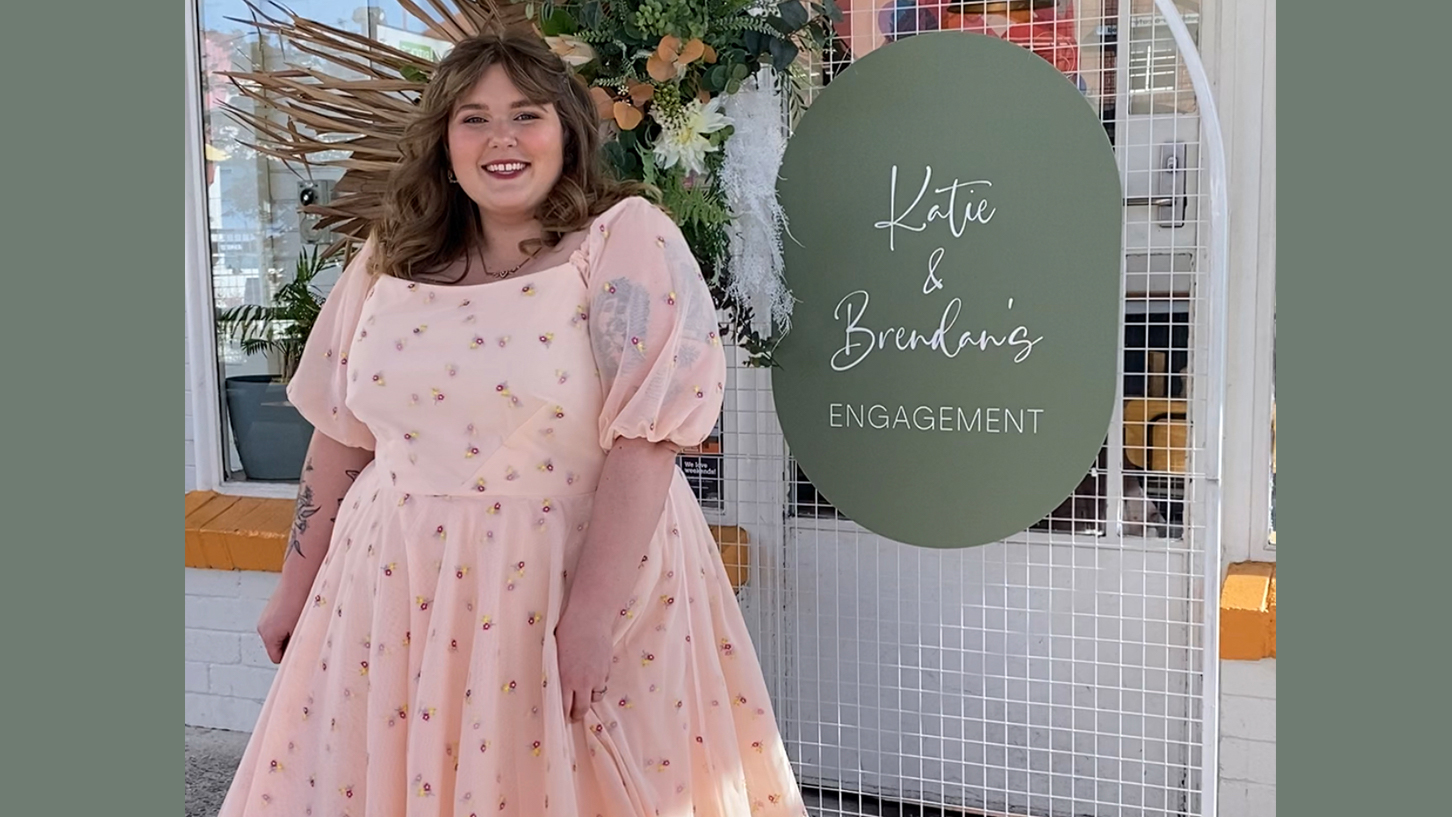 | ||
| Your browser is not supported. | ||
|
Please browse our site using any of the following options:
| ||
How to make an engagement party dress with Katie Parrott

Katie Parrott has partnered with Spotlight to create her own stunning engagement party dress using our great range of quality fabrics. Discover her tips for 'pattern hacking' and how she was able to design and make this absolutely beautiful dress!
For my recent engagement party, I decided I wanted to make my own dress. While there are probably millions of fancy dresses available to buy ready-made online, as a plus-size person, there are far fewer options - and those options are not generally to my taste! I decided to take the plunge, and not only that but I challenged myself with some new skills and worked with new-to-me fabrics.
I love that I was able to make a one-off dress, completely custom fitted to me and in the exact fabric I wanted! So, I thought I would go through my process for making a tailored-fit engagement party dress, all with Spotlight fabrics!
Choosing a pattern and making a toile
I had a decently specific idea of the style I was after - big sleeves, a swishy skirt, and a fitted, square-neck bodice. With that front of mind, I did some searching online for a pattern that roughly met that brief, and that also went to my size as I didn't feel like grading a pattern up for this project. I found a pattern that seemed to have the main elements, so I got it printed and started on my toile!
What's a toile you ask? Also called a muslin or mock-up, it's a practice garment, which gives you an opportunity to try out the fit and construction of a new pattern. It's normally made from a cheap fabric that has a similar kind of weight as your 'good' fabric. To be completely honest, I normally don't make toiles as I don't have the patience for them. However, for this pattern, I knew I'd be doing some hacks (changes to the base pattern), so I needed to know how the original dress pattern was constructed before making those changes. I also wanted to make sure the fit would be good before cutting into the metres and metres of tulle I had bought for my final dress version!
Luckily my toile fit perfectly, so I was ready to move on to hacking up the pattern to better match my vision!
Pattern hacking
When you can't find an exact pattern for something, pattern hacking is a great way to get there. You start with a base pattern that fits well and then make changes to that pattern to end up with a new design. Sometimes those hacks can be small, like changing the length of a garment, or big, like mashing together multiple patterns or doing substantial alterations to design elements.
My 'hack' focus for the dress pattern I was using was on two areas: the skirt and the sleeve. While I liked the original sleeve, I didn't feel like it was voluminous enough, so I used the 'slash and spread' method for the sleeve cap. This gave me enough fabric to then elasticate at the shoulder and the sleeve hem to create a little puff sleeve! There are lots of detailed blogs and video tutorials on sleeve hacks online - the internet is your best resource if you want to learn how to do some of these techniques and can't access a sewing class!
For the skirt, the original dress has a double layer of asymmetrical circle skirts. This looked great on the toile I made, but for my actual dress, I knew that I wanted to do a lot of layers and decided that a simpler circle skirt would let the gorgeous embroidered tulle shine better. So I used one of the original asymmetrical circle skirt pieces as a base and added some extra paper to the bottom of the pattern piece to make sure it was the same circumference all the way around. This created my circle skirt!
Putting it all together
Now that I knew my pattern fitted and had been appropriately hacked, I needed to cut my pattern pieces four times each - once for the base layer/lining, once in the plain tulle, and twice in the embroidered tulle, so I got a depth of the embroidery. This process was very time consuming, but I needed all my cutting to be accurate to ensure that my dress fitted properly.
I then basted the layers together for each pattern piece - base fabric, plain tulle, x2 embroidered tulle - to make it easier to sew the garment together. From this point, it was just a matter of following the pattern instructions to assemble the pieces! The end product came together surprisingly quickly after all that preparation work, and I loved how it looked!
The end result is this gorgeous, floaty cocktail-length dress, which I wore at my engagement party to many accolades! I loved wearing something that I had made, and the process of learning new techniques and processes was really satisfying. Plus, I knew I had a completely original dress that no one else would be wearing!
Inspired to make your own dress? Shop our specialty fabric range online here.




